Industrial robots - their types and varieties
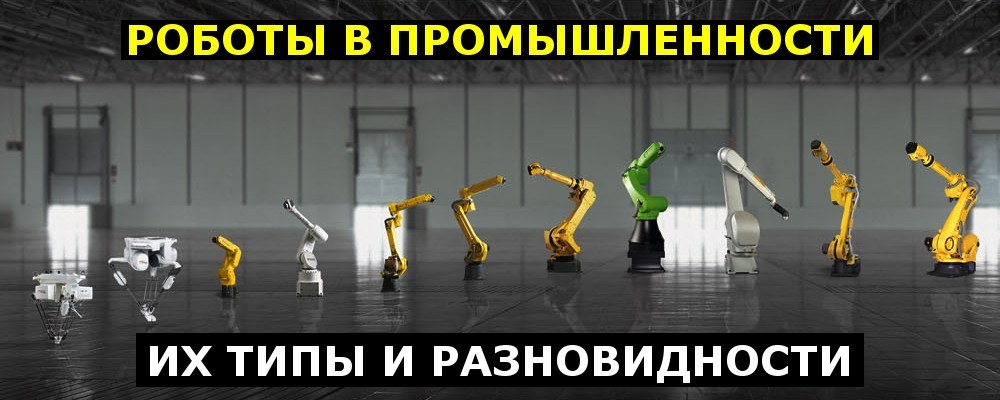
What is it?
This article is about the industrial application of robotics. The use of robots in the industry began, by historical standards, not so long ago - a little more than half a century ago, but now you can hardly imagine what kind of production without automatic lines, without steel manipulators and watchful robots of glass robots - these iron guys have become part of production processes and go are not going to.
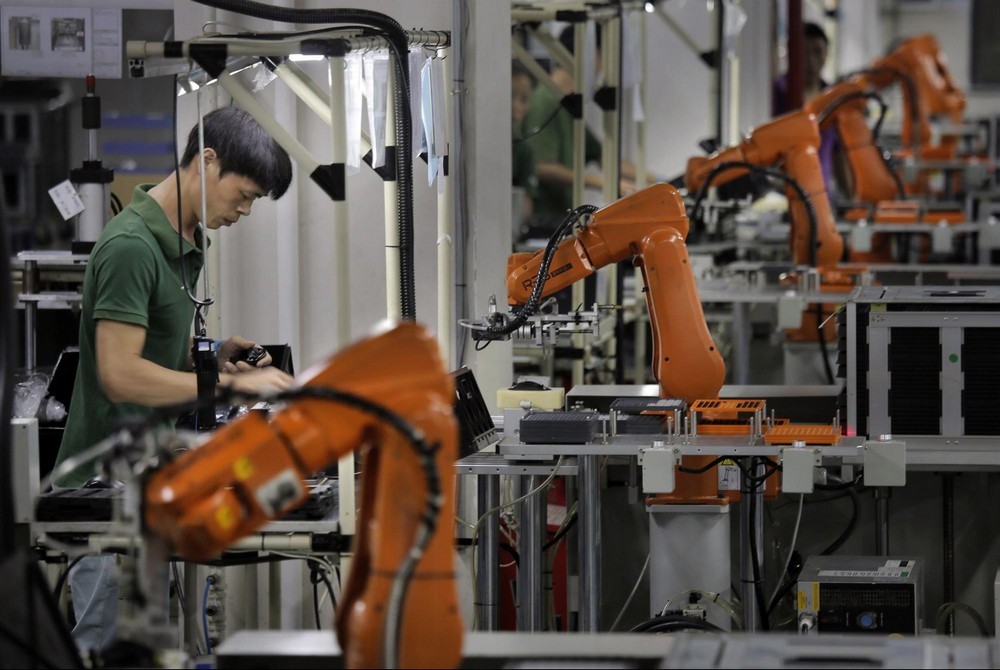
Despite such a vast, almost ubiquitous distribution of robots, only specialists fully realize the full range of their capabilities. In this article, we will open the door to the world of industrial robotics for a wide range of readers: we will describe some types of industrial robots and their areas of application. You can not embrace the immense in one article, but if readers are interested, we will definitely continue.
')
So what they are - robots?
There are several classifications of industrial robots: according to the type of control, according to the degree of mobility, according to the scope and specificity of the operations performed.
By type of management:
Guided robots: require each operator to control each movement. Due to the narrowness of the applications are not common. And not quite robots.
Automata and semi-autonomous robots: they act strictly according to a given program, often do not have sensors and are not able to correct their actions, cannot do without the participation of the worker.
Autonomous: they can perform a programmed cycle of actions without human intervention, according to predetermined algorithms, and adjusting their actions as necessary. Such robots are able to completely block the field of activity in their pipeline, without attracting live workers.
By function and scope:
Robots are divided by purpose and executable functions, here are just a few of them: industrial robots are universal, welding, machine-building, cutting, picking, assembling, packaging, storage, painting.
This is not a complete list: the number of various options is constantly growing and it is impossible to list everything in one article. It can only be said with certainty that there is hardly any area of human activity where robots could not make human labor more creative by taking all the monotonous and dangerous part of the work for themselves.
Other classification methods
Each encyclopedia, each directory and each manufacturer has its own classification and typology of robots. Which is not surprising - it is often determined solely by the specific needs and private approach of the person who makes it up.
Will this prevent us from examining some samples and understanding what they can do? Of course not. Go.
Consider the samples
Among industrial robots stands out the products of such well-known companies as Kuka, Fanuc, Universal Robots, some of which we will look at a little lower.
KUKA KR QUANTEC PA Arctic
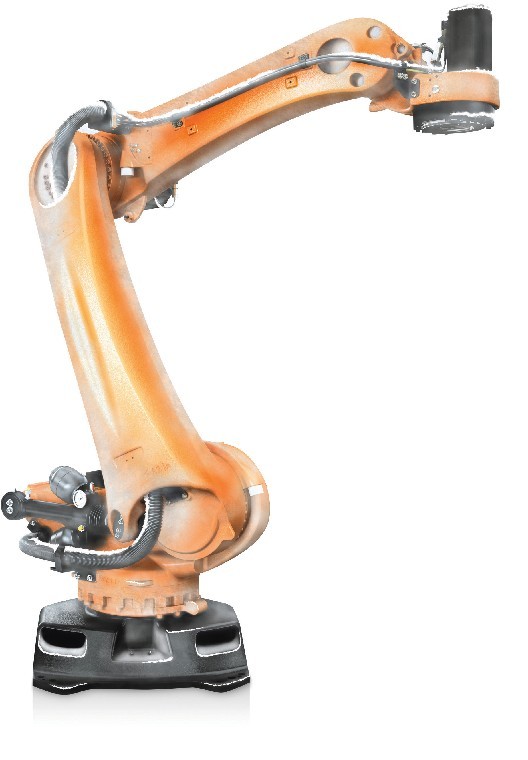
KUKA KR QUANTEC PA is one of the best palletizing robots on the market. KUKA KR QUANTEC PA Arctic - its modification, a robot operating at extremely low temperatures. It is designed to work primarily in freezers, at temperatures down to -30 ° C. Electronic and mechanical parts of the device do not need protection from frost, snow, frost, and also do not emit excessive heat. The range of the manipulator of the Arctic modification, as in the standard KUKA KR QUANTEC PA, is 3195 mm, and the payload is up to 240 kg. The device is ideal for use in the food industry and in the conditions of the Far North. In addition to making piles of pallets, the robot can perform other manipulations, because the accuracy of its movements, or more precisely, the stability of repeatability of positioning, is 0.06 mm.
FANUC M-2000iA / 1200
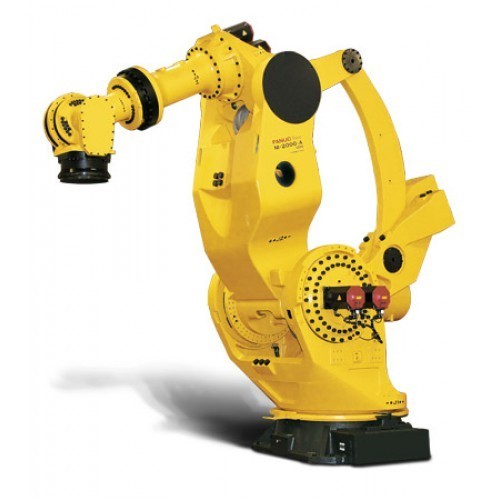
FANUC M-2000iA / 1200 - a five -axle lifting robot lifting up to 1200 kg and moving this load up to 3.7 m - is ideal as a loader, as it works without human participation, which practically eliminates the risk of injury. Works at temperatures of 0 ° C - +45 ° C. Repeatability is 0.03 mm.
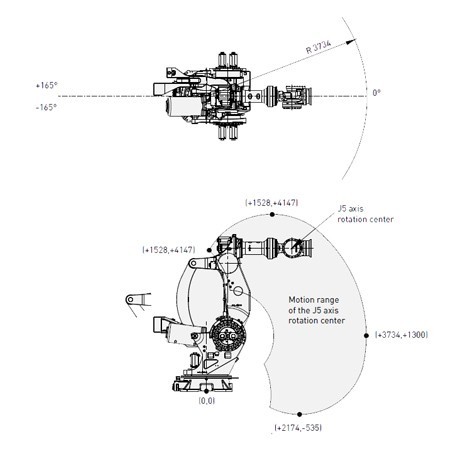
Extremely durable machine.
Universal Robots - UR10
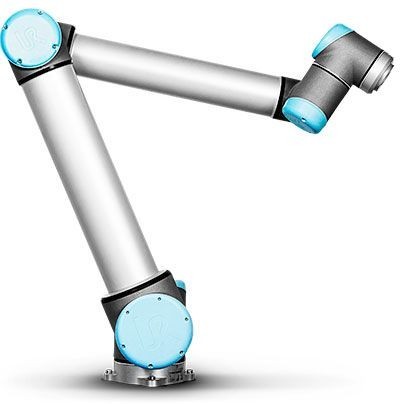
The UR10 is the largest Universal Robots manipulator and is a collaborative robot, to put it simply - it is designed to work with other equipment and help people in their work.
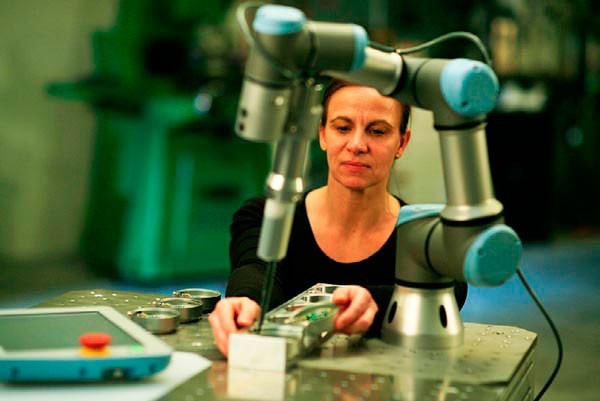
The UR10 model manipulator has a range of 1.3 m and lifts the load up to 10 kg. It can be used with agricultural, pharmaceutical, technological and many other equipment. Compactly placed on the workplace of a person to become his “third hand”, easily programmable and quickly adjusted.
UR10 can screw, glue, weld and solder, make injection molding and assembly work.
Also, Universal Robots robots are used in the Voodoo Manufacturing project: The Skywalker Project of Medium Corporation is a 3D printing factory, many of whose operations are performed by robot manipulators. Activities such as replacing printing platforms, collecting and storing finished products no longer require the tireless attention of staff.
Of particular interest are universal robots, since they, by virtue of their purpose, are equipped with the most adaptive control systems.
Rethinkrobotics
These are robots like Baxter and Sawyer from Rethinkrobotics.
Baxter is a multifunctional robot with two manipulators and feedback and self-learning systems.
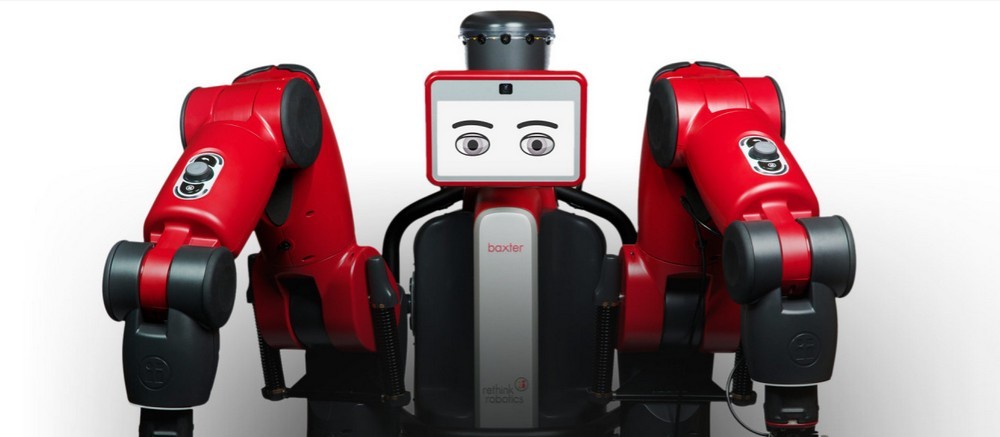
His 7-axis manipulators are capable of almost everything that a human hand is capable of, including - having feedback and can control the efforts made. This, plus more design features, makes Baxter safe for living workers - his workplace does not need fencing, and indeed, it takes up little space, which saves a lot of space in the workshop. A pair of Baxters able to work successfully together.
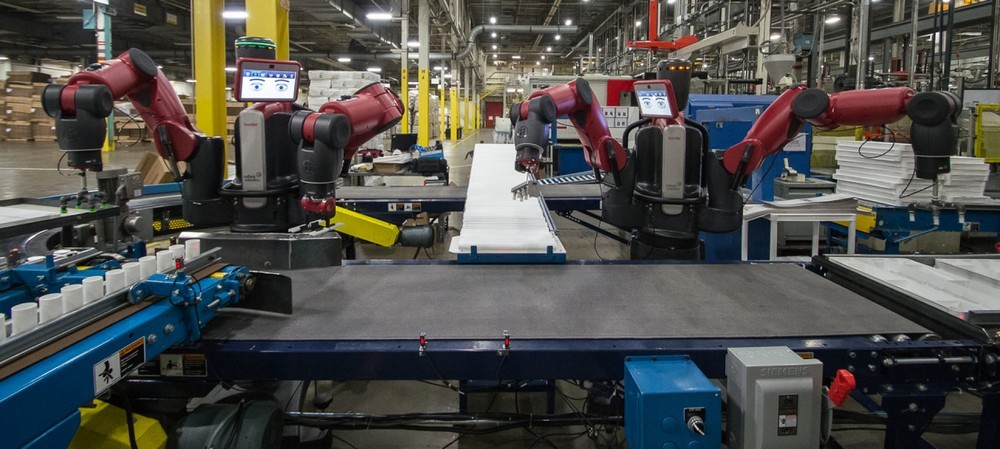
Baxter is also interesting because it does not require thorough detailed programming of each of its actions - it can be “taught” not only through an intuitive visual application, but also right at the workplace - repeating the movements shown, it remembers them and applies them later.
Sawyer - “Baxter's“ younger brother ”is an amazingly compact and lightweight robot manipulator, it weighs only 19 kilograms and can be installed almost anywhere without taking up much space.
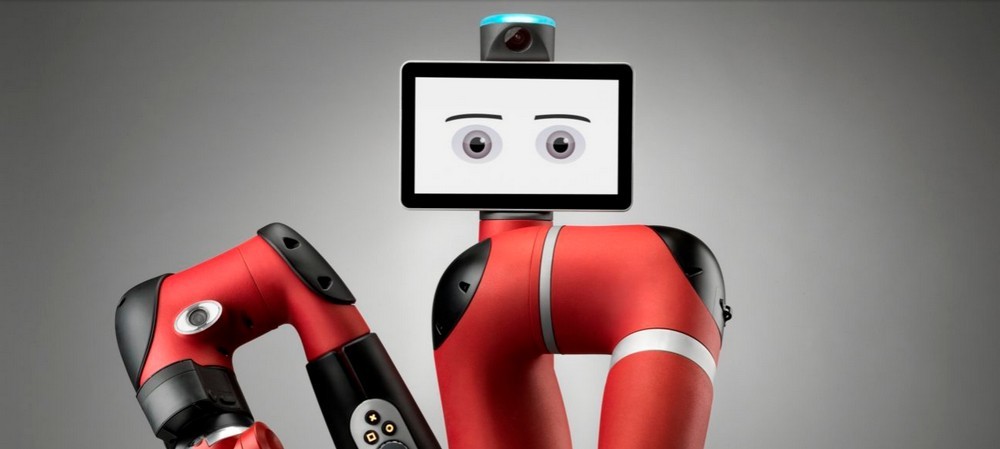
The accuracy of Sawyer’s actions reaches 0.1 mm, which makes it possible to use it in hundreds of types of picking, assembly and other conveyor works.
Both robots are easily retrained to perform new functions even without using traditional programming and are just as easy to move from one workplace to another.
Hybrid production
Stratasys Infinite-Build 3D Demonstrator
The approach of the Stratasys company, which has created an industrial device of a new type - a hybrid of a robot and a 3D printer, is very interesting.
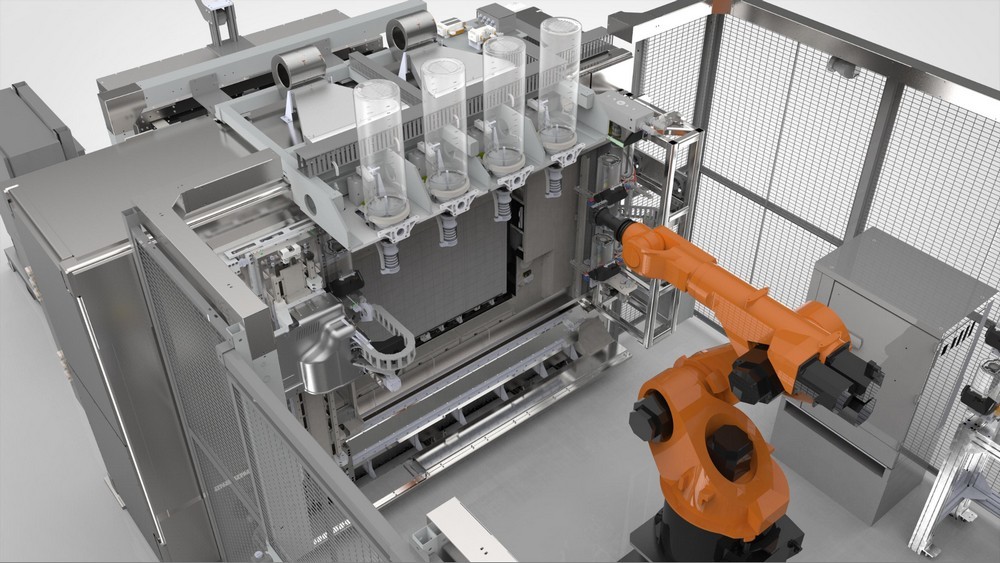
Of course, any 3D printer has the features of a robot, but here it is a completely traditional form of robotic manipulator, which also has the function of FDM printing. Stratasys Infinite-Build 3D Demonstrator is intended primarily for aviation and space production, in which its ability to print on vertical surfaces of unlimited area is so important, in accordance with the concept of “infinite-build” - “infinite construction”. Monsters such as the aerospace giant Boeing and the automotive concern Ford, which provided Stratasys with specifications for the required characteristics of the resulting products, are associated with the project.
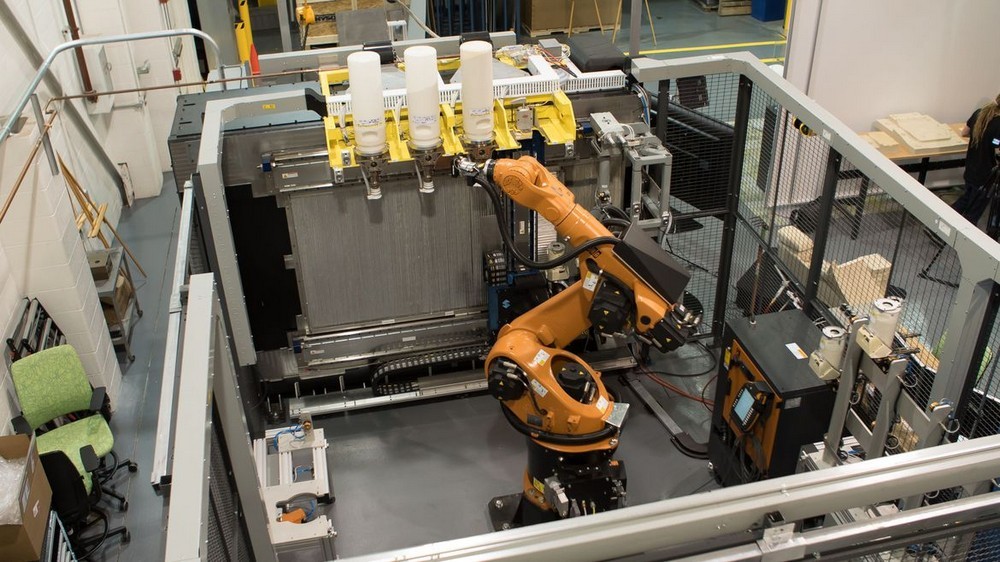
The eight-axis mechanism of the manipulator, the abundance of specially designed composite materials for printing, traditionally high quality workmanship — everything tells us that this device and its descendants have a great future.
3D Systems - Figure 4
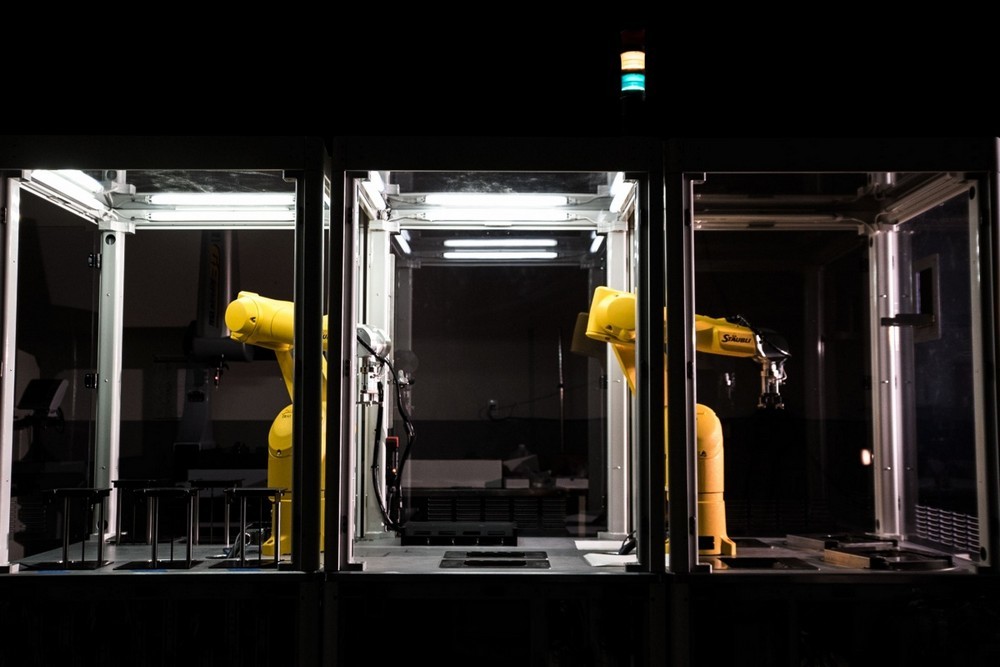
Figure 4 of 3D Systems - a modular robotic system for automating stereolithographic 3D printing, no more, no less.

This is a complete automatic system that is capable of producing new products every few minutes - unlike several hours on conventional SLS printers.

In addition, the cycle already includes such steps as washing, separation of supports, and backlight, and not only the primary exposure. Figure 4 does all this by itself, without operator intervention in the work process.
Due to modularity, rather large automatic lines can be created on the basis of Figure 4 using standard components.
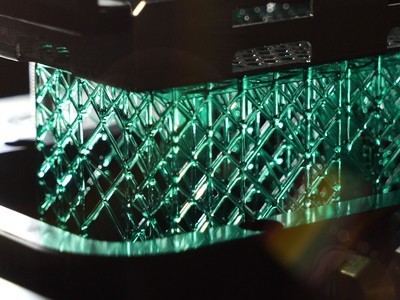
This complex was presented to the public this year, at the International Dental Show in Cologne, as well as the new 3D printer ProJet CJP 260Plus - a full-color 3D printer designed for anatomical modeling of medical products and rapid prototyping of any industrial designs.

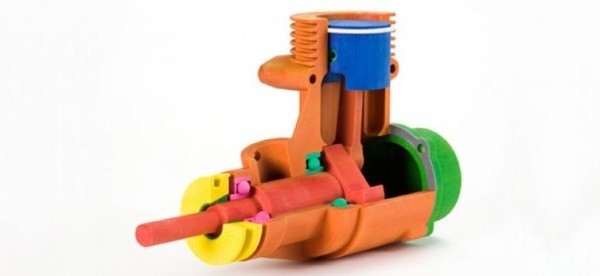
The printer is also robotic - equipped with a system of automatic loading, removal and processing of printing powder.
It is safe to say that an integrated approach to 3D printing is part of the work culture of the future. It will give a radically new combination of speed, accuracy, convenience and cost reduction of products.
Carbon - Carbon SpeedCell
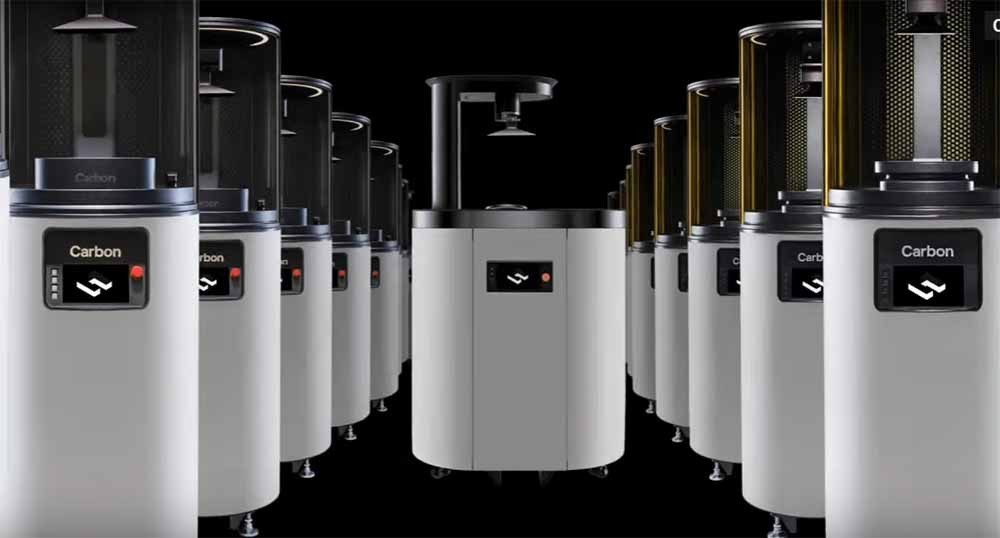
Carbon SpeedCell is a technological solution from Carbon, which includes the new M2 3D printer using CLIP technology and a finishing device for stereolithographic printouts Smart Part Washer.

CLIP is a technology of layerless stereolithographic printing, which provides speed from 25 to 100 times faster than conventional SLS and a new level of surface quality.
The CLIP (Continuous Liquid Interface Production) system allows you to get previously impossible forms of products that require minimal post-processing. The manufacturer has not yet provided the exact characteristics of the hardware complex, but the approach itself is pleasing - this is almost a ready-made solution for any workshop that requires stereolithographic printing.
DMG MORI - LASERTEC 65 3D
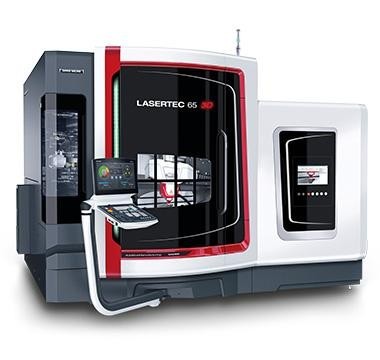
The device combines several different approaches to the machining of parts: it is a classic program-controlled milling machine - five-axis and very accurate, and a laser cutting tool with the same degrees of freedom, and a metal-printing 3D printer with laser deposition technology. It’s hard to imagine an operation that this machine with a metal part couldn’t do. Hybrid approach: milling the workpiece, fusing the missing parts or printing from scratch and finishing - all operations can be performed with the part in one approach, within one given program, without interrupting the technological cycle. The size of the processed and / or printed parts is up to 600 by 400 mm, and the weight can be up to 600 kg.
Such an MFP for metal work has already changed a lot in the production culture of piece and small-scale products, and in the near future this approach may be extended to mass production.
EOS - Additive Manufacturing

EOS has created manipulators that can perform various operations that require the capture and movement of parts. EOS developments in this area are based on observations of animal behavior, in particular, this manipulator was created following the example of an elephant's trunk.
Such a robotic arm can be used in a variety of industrial operations, such as: in transportation and packaging, in moving parts from one work area to another, for example, from a 3D printer to a post-processing chamber, to eliminate human involvement at this stage.
This is how it works:
The company also sponsors and represents the project Roboy - is a mobile humanoid robot that is able to perform any movements characteristic of man and serve as an assistant in production.
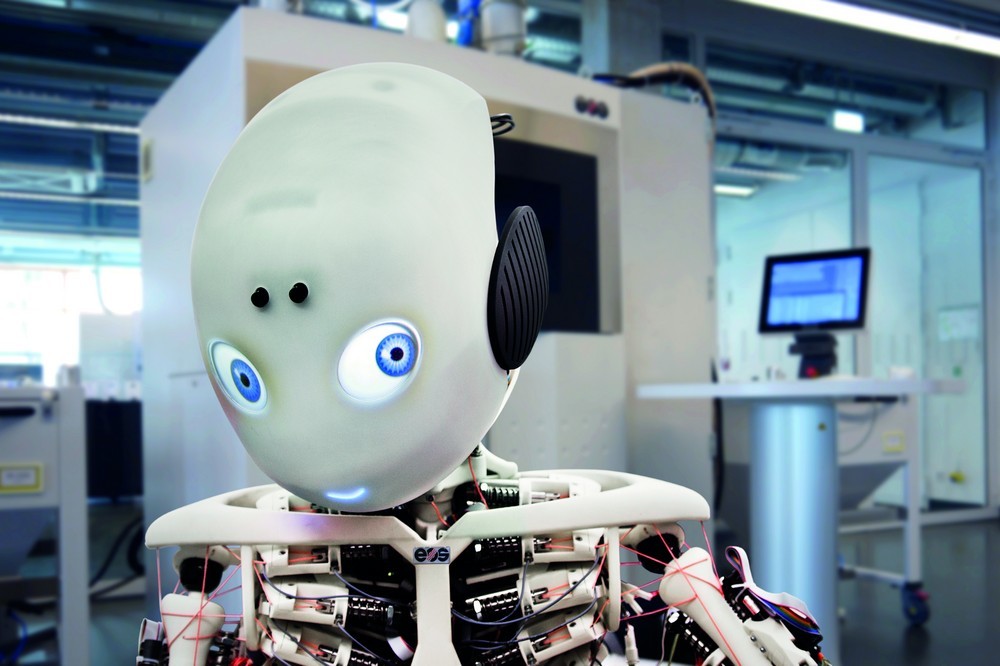
Concept Laser and Swisslog - M Line Factory
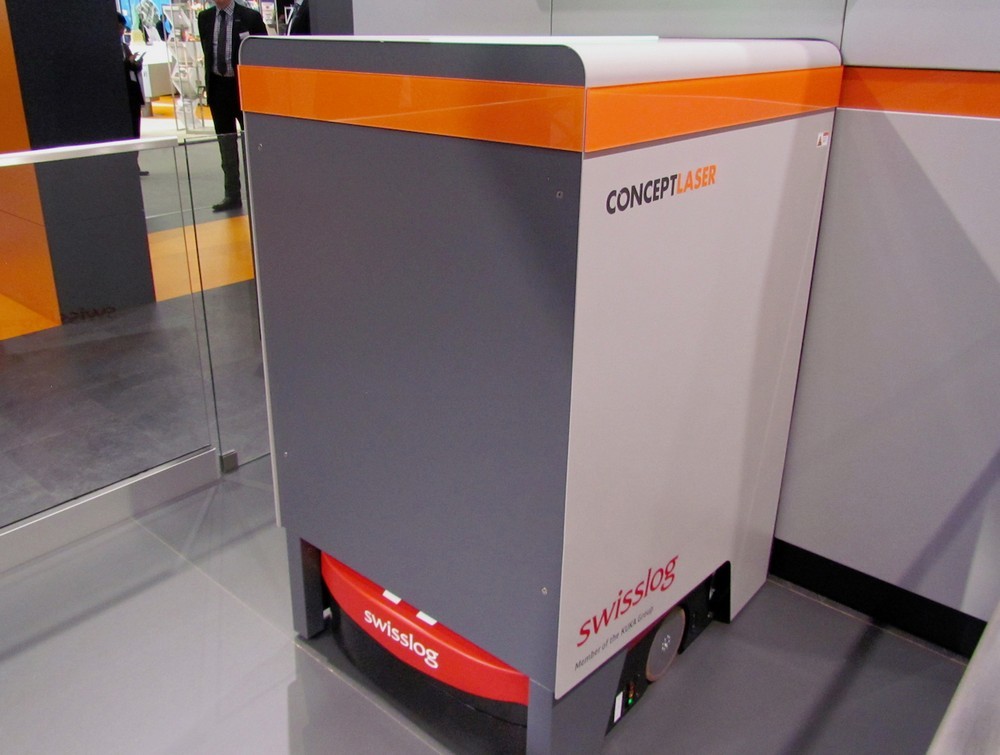
A well-known manufacturer of metal-printing 3D printers, Concept Laser signed an agreement with Swisslog, their overall project, M Line Factory, is a system for moving metal 3D printed parts between Concept Laser machines using Swisslog robots.
Companies continue to improve hardware systems for 3D metal printing. The robotized components of these machines are able to carry the part through the entire cycle - from loading the project into memory, until the finished product reaches the warehouse - without the need for operator intervention.
Additive Industries - The MetalFAB1
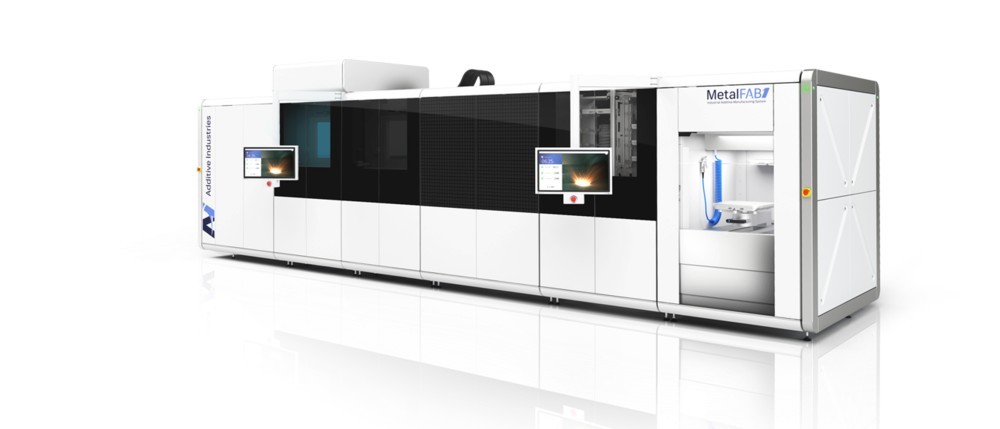
One of a kind installation - a single system for printing, transporting from the working chamber and storage of finished parts. In fact - the finished shop metal 3D-printing in one package.
There are robots that are able to perform the functions of welding and milling machines with programmed control.
As well as those that serve traditional CNC milling machines, increasing their productivity.
For example, this is what Sawyer mentioned above does:
findings
Robots in modern industry are everywhere. They are in any workshop and in any area of production. And this is normal: robots save employers money, and workers are saved from harmful and monotonously dulling work; robots work around the clock and nonstop; robots are much more accurate than living workers - they don’t get tired, they don’t “get an eye out”, their sensors and positioning systems are able to maintain accuracy up to a hundredth of a millimeter.
While we see them still not everywhere - many production processes are hidden from the average user, and usually not very interesting, but very soon it will be impossible not to notice that the vast majority of all material goods are produced by smart machines.
Want more interesting news from the world of 3D technology?
Subscribe to us in the social. networks:




Source: https://habr.com/ru/post/403323/
All Articles